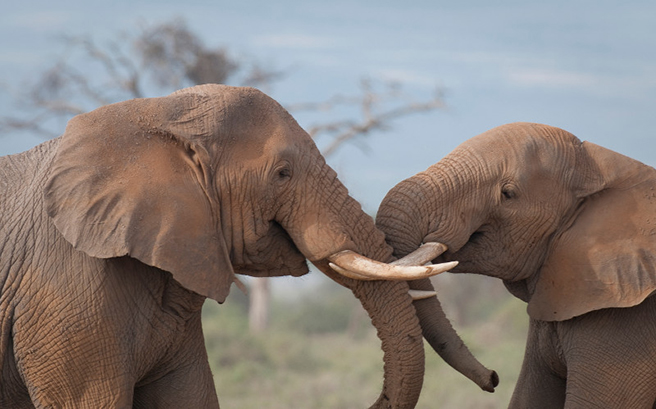Hope in a Poaching Crisis

In the 1970s and 1980s, there was a terrible epidemic of poaching in Africa. That’s when AWF did our “Only Elephants Should Wear Ivory” campaign, and we found a way to slam the brakes on this poaching.
We sent very clear, unambiguous messages to the marketplace that, if you’re in the ivory business, you had better pivot and very quickly find something else to do, because this business is going to come to a screeching halt—and that’s exactly what happened. With the ivory ban, the change was tangible.
So we know what success looks like. Now, it’s taken all of us some time to realize the severity and pervasiveness of this second epidemic. Governments, NGOs, everybody has to again send a clear message that the illegal wildlife trade will be shut down.
People would love to see this happen very quickly. Unfortunately, it’s a big, complex machine. With the ivory trade, we’re talking about 30 to 40 African elephant range states and numerous countries that are source or consumer markets or transit points.
It’s not as easy as flipping a switch.
But the pressure is mounting. AWF has a number of initiatives underway. The U.S. government is getting involved, former Secretary Clinton has gotten involved, and celebrities are participating in our campaigns. We’re taking the resources people are giving us, and we are organizing as a movement.
It’s starting as a couple of instruments, but soon we’ll have a symphony of voices and measures by international governments that will have the same effect as before and slam the brakes on the illegal wildlife trade.
See our current anti-ivory campaign PSAs.
Photo: Barbara von Hoffmann/www.vonhoffmannphotography.com